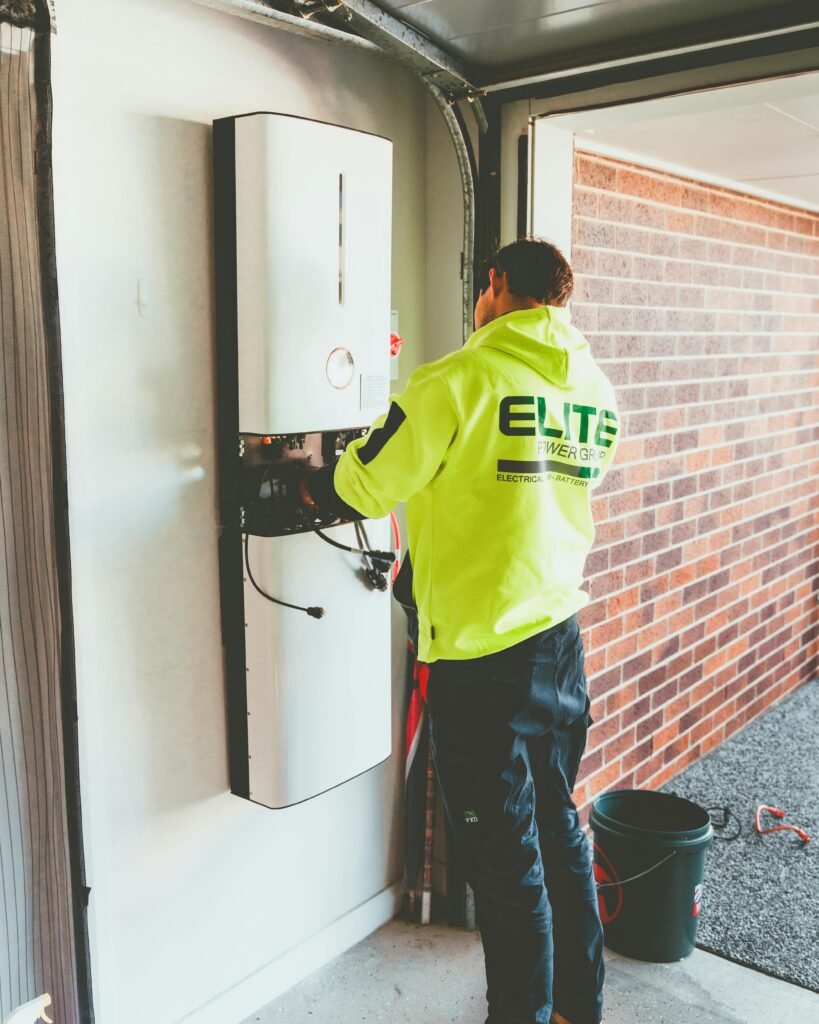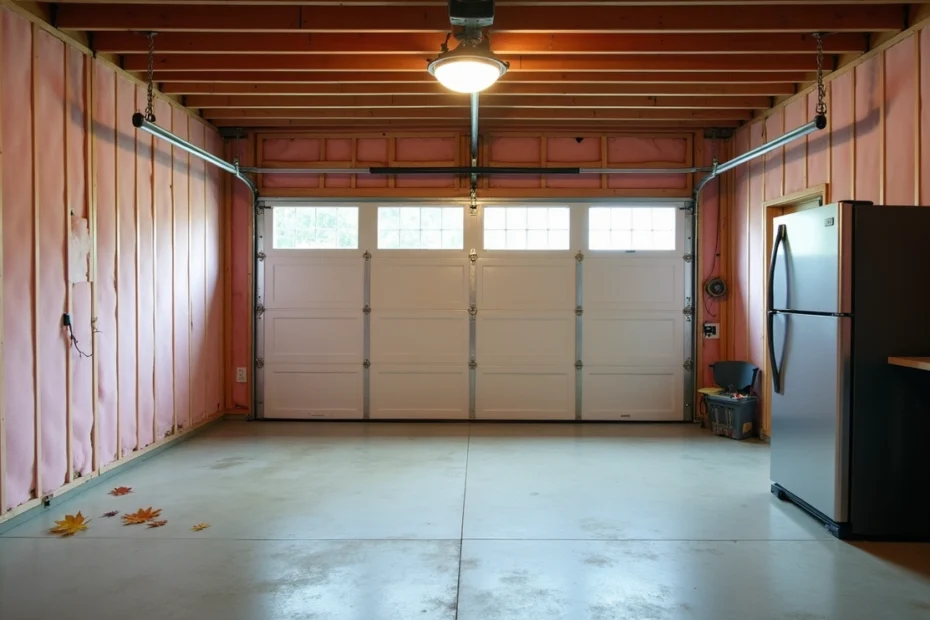The quickest way to insulate your garage saves more than just material costs—it prevents your home’s energy from draining away. Most homeowners view their garage as part of the outdoors rather than their home. This mindset costs them hundreds of dollars each year.
An uninsulated garage attached to your house lets precious heat escape during winter. Your heating bills climb when cold air seeps into living spaces, while summer heat forces your air conditioner to work harder and longer. On top of that, old appliances make things worse—a garage fridge from before 1990 could add between $250-300 a year to your power bills.
In this piece, you’ll learn economical ways to keep your garage warm in winter. We’ll cover the most affordable ceiling insulation methods, practical ways to warm up your garage, and budget-friendly door insulation techniques. These expert tips will help you create a more comfortable space and shrink your home’s carbon footprint.
Start with the basics: sealing and blocking air leaks
Air sealing should be your priority before adding insulation materials to create an energy-efficient garage. The best insulation won’t work if air moves freely through your space. Sealing these leaks is one of the most economical improvements you can make.
Seal cracks in walls and floors
Those tiny cracks might look harmless, but they let a lot of air pass through. Take time to inspect your garage and focus on where concrete walls meet the floor. You’ll often find gaps in this area that allow water and air to seep in.
Flexible polymer caulk offers a quick fix for small wall and floor cracks. Larger gaps around the foundation need special attention:
- Track crack sizes every few months to spot changes
- Apply hydraulic cement to wide gaps that could be structural
- Use silicone caulk in joints that expand and contract with temperature
Use weatherstripping on doors and windows
The garage door creates the biggest challenge in air-sealing efforts. Standard vinyl seals on the exterior door frame break down over time and create major air leaks.
You can add weatherstripping easily without spending much:
- Measure each door side and add 6-8 extra inches for overlap
- Secure the weatherstripping with nails every 8 inches while keeping it tight
- Create 90-degree bends at corners and nail one inch from the ends
- Cut extra material to match the garage floor level
Each weatherstripping material serves a specific purpose. Vinyl makes great bottom gaskets, while foam fills uneven gaps better.
Insulate around outlets and switches
Exterior wall outlets leak more energy than you’d expect. Just six ceiling boxes with 1/8-inch gaps equal a four-inch hole in your ceiling. Sealing these spots can boost your garage’s efficiency.
Here’s how to insulate outlets properly:
- Get foam gaskets – they cost under $25 for a whole house
- Switch off the power to the target outlets
- Take off the cover plates and put in the gaskets
- Use caulk or expanding foam around flush-mounted boxes
- Seal spots where wires enter the box
This simple fix stops cold air from moving through wall cavities. This becomes crucial for attached garages where fumes could enter living areas.
Insulate the major surfaces on a budget

After sealing those air leaks, your next best move is to work on the major surfaces. Let’s get into the most economical options for each part of your garage.
Cheapest way to insulate a garage ceiling
The most budget-friendly choice for most garage ceilings is fiberglass batts or rolls. You can install these materials without too much trouble, and they don’t always need drywall covering, which saves you money. A standard 24×24 garage gets great value from fiberglass compared to other materials.
Rigid foam board insulation makes a good budget-friendly ceiling option too. This material helps you save on energy costs and cuts down on noise. The attic space above your garage? Blown-in cellulose insulation might be your best bet. It’s surprisingly affordable, and you’ll just need to rent a blower. Here’s a money-saving tip: some stores throw in free blower rental when you buy enough material.
DIY garage door insulation kits
You can tackle garage door insulation kits in a weekend and feel the difference right away. These kits run between $50-$120 and can drop door surface temperatures by 25-30 degrees. A typical kit comes with:
- Pre-cut panels that fit between door sections
- Adhesive materials for secure installation
- Detailed instructions for DIY installation
You can save even more money by cutting your own panels from rigid foam insulation boards. This approach costs less than pre-made kits but works just as well. Most homeowners see about a 10-degree temperature improvement after they finish.
Use foam board or fiberglass for walls
Fiberglass ended up being the go-to, cost-effective wall insulation material. You can find it in R-values from R-11 to R-38, and it keeps the heat where it belongs. Here’s how to install it:
- Measure each wall cavity opening carefully
- Cut insulation to size using a utility knife
- Fit insulation snugly between wall studs
- Secure with staples to each stud
Foam board (also called rigid foam) makes another great choice, especially with thin walls. It costs a bit more than fiberglass but packs more R-value per inch – perfect when space is tight. Note that Kraft-faced insulation needs drywall or another approved interior finish covering for safety.
Low-cost upgrades that make a big difference
Your garage’s energy efficiency can improve with several affordable upgrades beyond major insulation projects. These simple additions work well with your insulation efforts and need minimal investment.
Install a door sweep or draft stopper
Draft stoppers are great at keeping warm air in and cold air out. Strip-style sweeps work best because they combine effectiveness with convenience. You can install them easily without taking up floor space. The sweep should go on the outside face of exterior doors. This prevents snow, dirt, and pests from getting trapped underneath. You’ll save money by installing it yourself – it takes just 30 minutes compared to a contractor’s fees.
Use rugs or mats to insulate the floor
Cold air can still come up through concrete floors after you insulate walls and ceilings. Thick rugs or rubber mats add extra insulation and cut down heat loss. While this might not work in areas where cars drive daily, covering parts of your garage floor makes the temperature noticeably better. Epoxy coating works well for high-traffic areas where rugs aren’t practical.
Upgrade to LED lighting for energy savings
LED bulbs offer impressive advantages over old incandescent ones:
- Uses 75% less energy than traditional lighting
- Lasts up to 25 times longer than incandescent bulbs
- Gives brighter light while using less energy
LED fixtures also handle shocks and vibrations better, which makes them perfect for busy garages.
Smart choices for long-term savings

Smart upgrades to your garage space can lead to major financial benefits in the long run.
Replace old appliances with energy-efficient models
Your old garage refrigerators and freezers might be quietly eating away at your money. Refrigerators made before 1990 can cost you between $250-300 each year to run. Garage-ready appliances with Energy Star certification will cut these costs by a lot through:
- Lower running costs
- Better durability that makes them last longer
- Boosted performance when garage temperatures change
Add reflective insulation or radiant barriers
The quickest way to control garage temperature is by using reflective insulation. These barriers come with two layers and reflective foil surfaces that block up to 95% of radiant heat. Your garage stays cooler in summer and warmer in winter. Radiant barriers work better than regular insulation because they don’t absorb heat, which makes them perfect for use all year round.
Solar-powered ventilation fans are worth it
Roof-mounted solar fans work great for garages with open ceilings and cool your space at no cost. These systems work whenever the sun shines without increasing your power bills. Today’s solar fans come with “ClimaSense” technology that:
- Keeps running up to 4 hours after dark
- Changes settings based on temperature
- Gets you a 30% federal tax credit
These upgrades together are a great way to get savings through lower energy use while making your garage more comfortable.
Conclusion
You don’t need to spend a fortune to insulate your garage. The budget-friendly solutions in this piece will make your garage more comfortable and save you money over time. Most people skip their garage’s energy efficiency, yet this space gives you a great chance to cut costs through simple DIY projects.
Air leak sealing must be your first step before adding any insulation. This basic task costs little money and brings big benefits. Affordable insulation options for walls, ceilings, and doors will complete your garage’s thermal envelope without breaking your budget.
Fiberglass batts are the most economical choice for most garages. DIY garage door insulation kits deliver amazing temperature improvements at a fraction of professional costs. Door sweeps, floor mats, and LED lighting are quick comfort upgrades that won’t drain your wallet.
Smart homeowners look beyond quick fixes. Energy-efficient appliances, reflective insulation, and solar-powered ventilation fans might cost more at first but pay off through lower energy bills. These smart investments turn your garage from an energy drain into a comfortable extension of your living space.
Many people think garage insulation needs expensive materials or professional help. The truth is, you can create an energy-efficient garage through economical, available methods. Your wallet and comfort will thank you for taking these simple steps toward a better-insulated garage.
